Is jazz simply a type of music, or is it a language spoken through rhythm and melody? Known for its improvisation, syncopation, and vibrant blue notes, jazz is much more than just a genre.
It originated in New Orleans during the early 20th century within African American communities, creating a distinctive sound rich in polyrhythms and interactional call-and-response patterns.
This blog post will unravel what defines jazz, exploring its fundamental elements, and offering insights into its cultural significance. Dive in to understand how these unique characteristics have made jazz a timeless and influential musical form.
What Is Jazz: An Overview
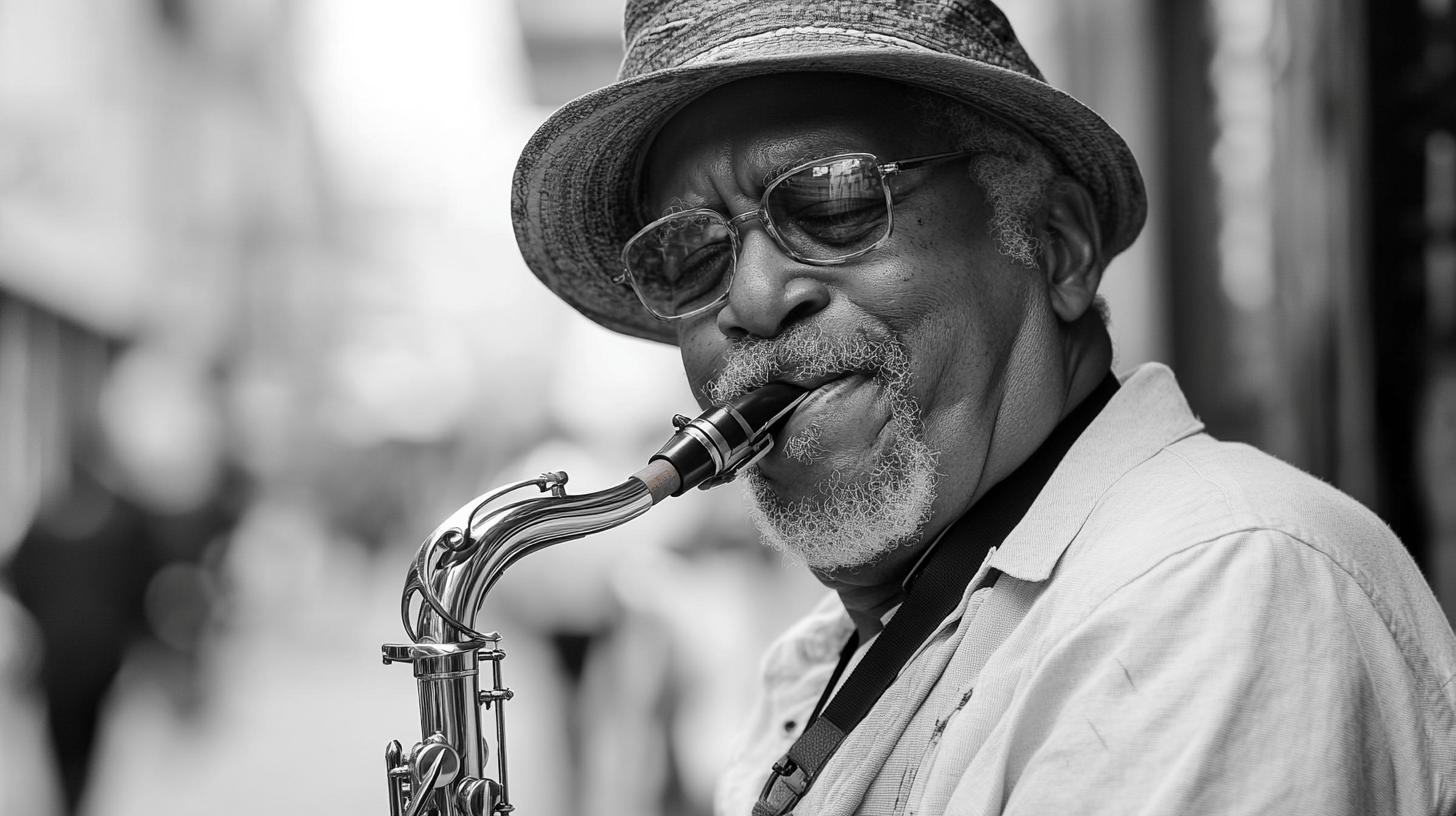
Jazz, originating in the early 20th century, is a genre deeply rooted in the African American communities of New Orleans. What is jazz? It is a dynamic musical form that emerged from the confluence of blues, ragtime, and European classical music.
The genre is celebrated for its rich cultural tapestry and its ability to transcend musical boundaries, fostering a spirit of innovation and inclusivity. The early influences of African rhythms and melodies are evident in the foundational aspects of jazz, making it a unique representation of cultural synthesis.
Jazz is characterized by several defining musical elements. Improvisation is at the heart of jazz, allowing musicians to express individuality and creativity within a structured framework.
Swing, a rhythmic groove that propels jazz music forward, adds a danceable quality that distinguishes it from other genres. Syncopation, where unexpected beats or accents are placed in the music, creates a sense of surprise and excitement.
Blue notes, which are slightly lowered pitches, contribute to the emotional depth and distinctive sound of jazz. These elements work together to create a complex and engaging musical experience.
-
Improvisation
-
Swing
-
Syncopation
- Blue notes
Jazz holds significant cultural importance, having played a key role in social movements and cultural exchanges. It has served as a vehicle for artistic expression and social commentary, reflecting the struggles and triumphs of its creators.
The genre’s ability to adapt and evolve has allowed it to remain relevant and influential, continuing to bridge cultural and social divides. Jazz’s impact extends beyond music, influencing fashion, literature, and visual arts, and solidifying its place as a cornerstone of modern cultural expression.
The Historical Evolution of Jazz Music

Jazz music, with its roots deeply embedded in African American communities, began evolving in the late 19th and early 20th centuries. What were the early influences on jazz? Jazz emerged from the amalgamation of blues, ragtime, and European classical music.
These elements provided a foundation that allowed jazz to grow into a unique genre characterized by its improvisational nature and rhythmic complexity.
In the 1930s, jazz underwent significant transformation, morphing into what is known as swing music.
What defined the swing era? Swing music was marked by its rhythmic drive and a strong emphasis on danceability, which captivated audiences in ballrooms across America.
Big bands dominated this era, with prominent figures like Duke Ellington and Count Basie leading the charge. Their orchestras elevated jazz to new heights, making it a popular form of entertainment and a symbol of the vibrant cultural landscape of the time.
Following the swing era, jazz continued to evolve, introducing styles such as bebop, hard bop, and post-bop. What were the characteristics of post-swing jazz? Bebop emerged in the 1940s as a reaction to the commercialism of swing, emphasizing fast tempos, complex chord progressions, and intricate improvisations.
Artists like Charlie Parker and Dizzy Gillespie were instrumental in popularizing this style. Hard bop and post-bop followed, incorporating elements of gospel, blues, and even classical music, further expanding jazz’s artistic boundaries.
In modern times, jazz has continued to adapt and innovate, reflecting the diverse influences of contemporary music. How has jazz evolved in recent years? Modern jazz embraces a wide range of styles, from smooth jazz to jazz fusion, integrating elements of rock, funk, and electronic music.
This adaptability has allowed jazz to remain relevant, drawing new audiences and inspiring musicians worldwide. The genre’s ongoing evolution is a testament to its enduring appeal and its capacity to adapt to the ever-changing musical landscape.
Influential Jazz Musicians and Their Impact

Who are some of the most famous jazz artists? Louis Armstrong, Duke Ellington, Charlie Parker, and Miles Davis stand as towering figures in the world of jazz. Their contributions have profoundly shaped the genre, driving its evolution and expanding its reach.
Each brought a unique style and perspective, influencing countless musicians and listeners. These artists not only popularized jazz but also pushed its boundaries, crafting new sounds and techniques that have become integral to jazz’s identity.
Their work has left an indelible mark, ensuring their place in the pantheon of influential jazz figures.
-
Louis Armstrong: Revolutionized jazz with his virtuosic trumpet playing and charismatic vocal style.
-
Duke Ellington: Known for his sophisticated compositions and orchestral leadership.
-
Charlie Parker: A pioneer of bebop, transforming jazz with his innovative improvisations.
- Miles Davis: Pushed jazz forward through his explorations of modal jazz and jazz fusion.
How did these figures shape jazz music? Their innovations laid the groundwork for future developments in the genre. Armstrong’s improvisational brilliance inspired generations of musicians to explore new expressive possibilities.
Ellington’s compositions elevated jazz to an art form on par with classical music. Parker’s bebop style introduced a new level of complexity and speed, challenging musicians to hone their craft. Davis’s willingness to experiment with different styles ensured that jazz remained a dynamic and evolving genre.
Collectively, their impact resonates through jazz history, influencing both the genre’s direction and its perception as a sophisticated and deeply expressive musical form.
Key Characteristics That Define Jazz Music
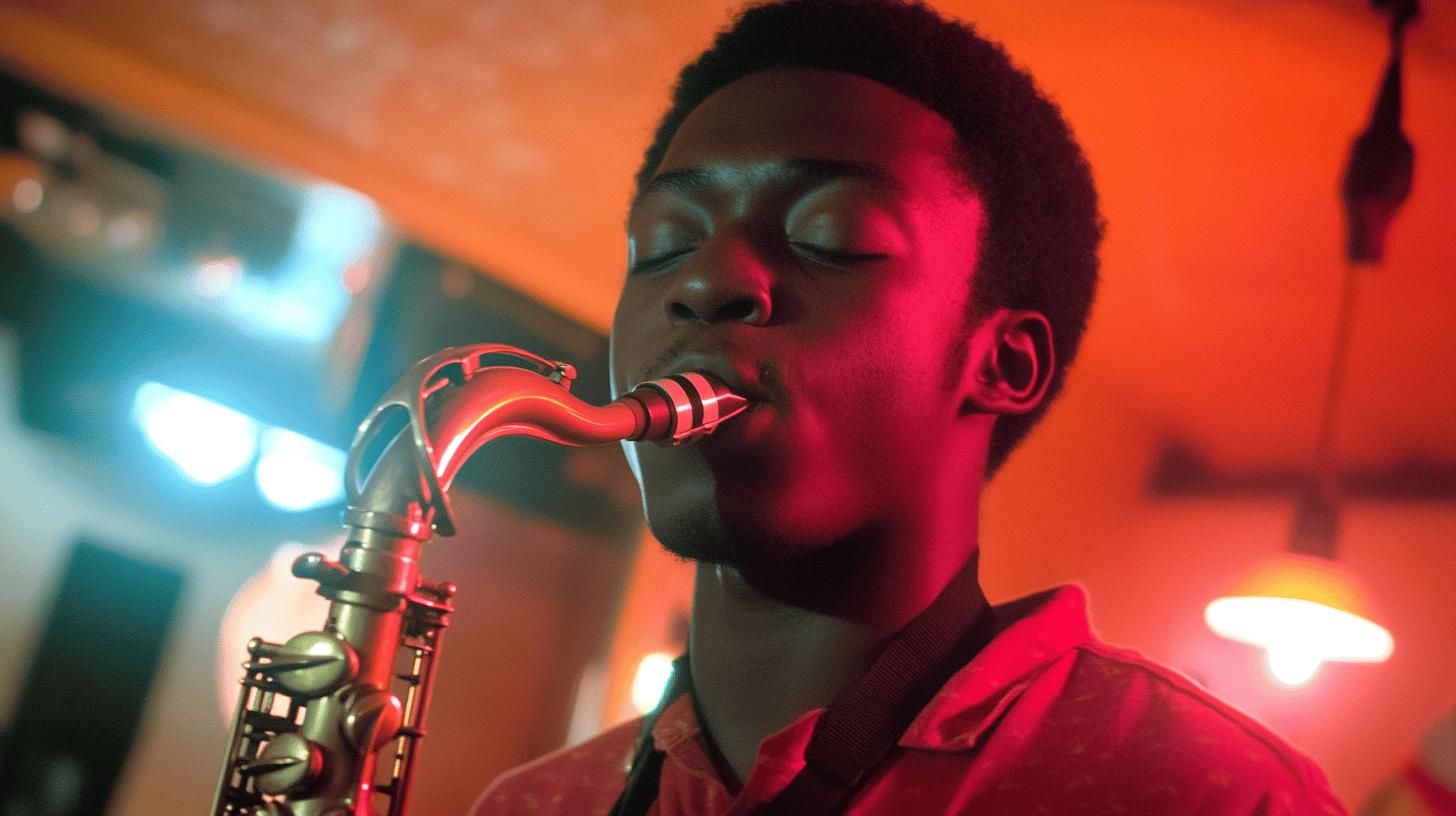
Improvisation is fundamental to jazz, allowing musicians to spontaneously create and explore musical ideas. What makes improvisation so crucial in jazz? It enables performers to express individuality and engage in real-time musical conversations with fellow musicians.
This element of unpredictability and creativity sets jazz apart from more structured genres, fostering a dynamic and ever-evolving performance. Improvisation allows jazz to remain fresh and exciting, as each rendition of a piece can differ significantly, providing a unique experience for both musicians and audiences.
Jazz rhythm and melody are characterized by syncopation and polyrhythms, which add complexity and drive to its sound. How do rhythm and melody contribute to jazz’s distinctiveness? Syncopation involves placing emphasis on unexpected beats, creating a sense of tension and release that captivates listeners.
Polyrhythms, the simultaneous use of contrasting rhythms, add layers and depth to jazz compositions. Melodically, jazz often employs blue notes—pitches that are slightly lowered—to infuse the music with emotional nuance and a characteristic "bluesy" feel.
These rhythmic and melodic elements combine to form jazz’s vibrant and engaging soundscape. Jazz harmony plays a crucial role in shaping its unique sound, often involving complex chord progressions and extended harmonies. What is the significance of harmony in jazz? Jazz harmony allows for intricate interplay between musicians, creating rich textures and unexpected harmonic shifts.
This complexity provides a backdrop for improvisation, offering musicians a wide palette of tonal colors to explore. The use of extended chords, such as ninths, elevenths, and thirteenths, adds sophistication and depth to jazz compositions, distinguishing it from simpler harmonic structures in other genres.
Harmony in jazz not only supports melodic exploration but also enhances the overall emotional impact of the music.
The Cultural Impact of Jazz in the 20th Century
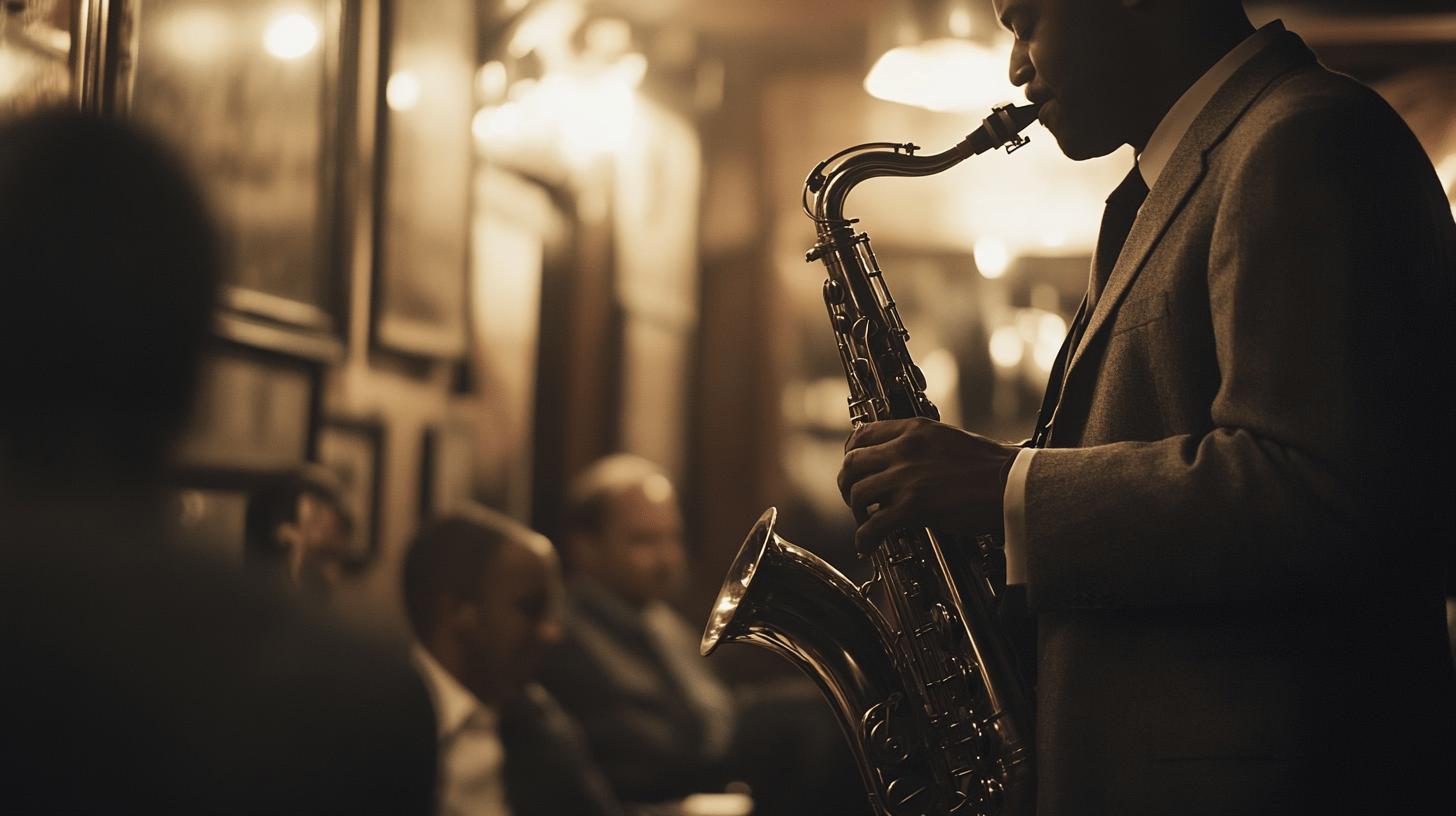
Jazz had a profound impact during the Jazz Age, a period in the 1920s when it became a defining symbol of the era’s cultural dynamism. What was the significance of the Jazz Age? Jazz symbolized the social and cultural shifts occurring in America, reflecting the exuberant spirit of the Roaring Twenties.
It was a time of economic prosperity, and jazz music echoed the freedom and break from traditional norms that characterized the decade. This era saw jazz capturing the imagination of a diverse audience, breaking through racial barriers as it gained popularity in clubs and dance halls across the country.
The Jazz Age marked jazz’s transition from a regional sound to a nationwide cultural phenomenon, influencing fashion, literature, and the arts.
Jazz’s role in social movements was pivotal, serving as both a soundtrack and catalyst for change.
How did jazz influence social movements? During the Civil Rights Movement, jazz was embraced as a voice for equality and justice. Its improvisational nature and roots in African American culture made it a powerful medium for expressing resistance and hope.
Musicians like Duke Ellington and Billie Holiday used their platforms to highlight social issues, with songs like "Strange Fruit" confronting racial injustice head-on. Jazz performances became venues for activism and dialogue, fostering a sense of community and solidarity among diverse audiences.
The genre’s emphasis on creativity and individuality resonated with movements advocating for social change, amplifying calls for freedom and equality.
-
Introduced improvisational techniques to rock and pop
-
Incorporated into classical compositions, enriching harmonic complexity
-
Influenced rhythm and blues, leading to the development of soul music
The enduring legacy of jazz in American culture is evident in its continued influence on music and art. Why does jazz remain significant today? Jazz’s adaptability and innovative spirit have allowed it to evolve alongside contemporary trends, ensuring its ongoing relevance.
It has inspired countless musicians across genres, from rock to hip-hop, with its emphasis on improvisation and collaboration. Jazz education has flourished, with institutions worldwide teaching its techniques and history, preserving its rich heritage.
Moreover, jazz festivals and clubs continue to thrive, celebrating the genre’s vibrant and inclusive nature. Jazz remains a testament to the power of artistic expression in bridging cultural divides and fostering a shared human experience.
Exploring Different Styles and Genres of Jazz
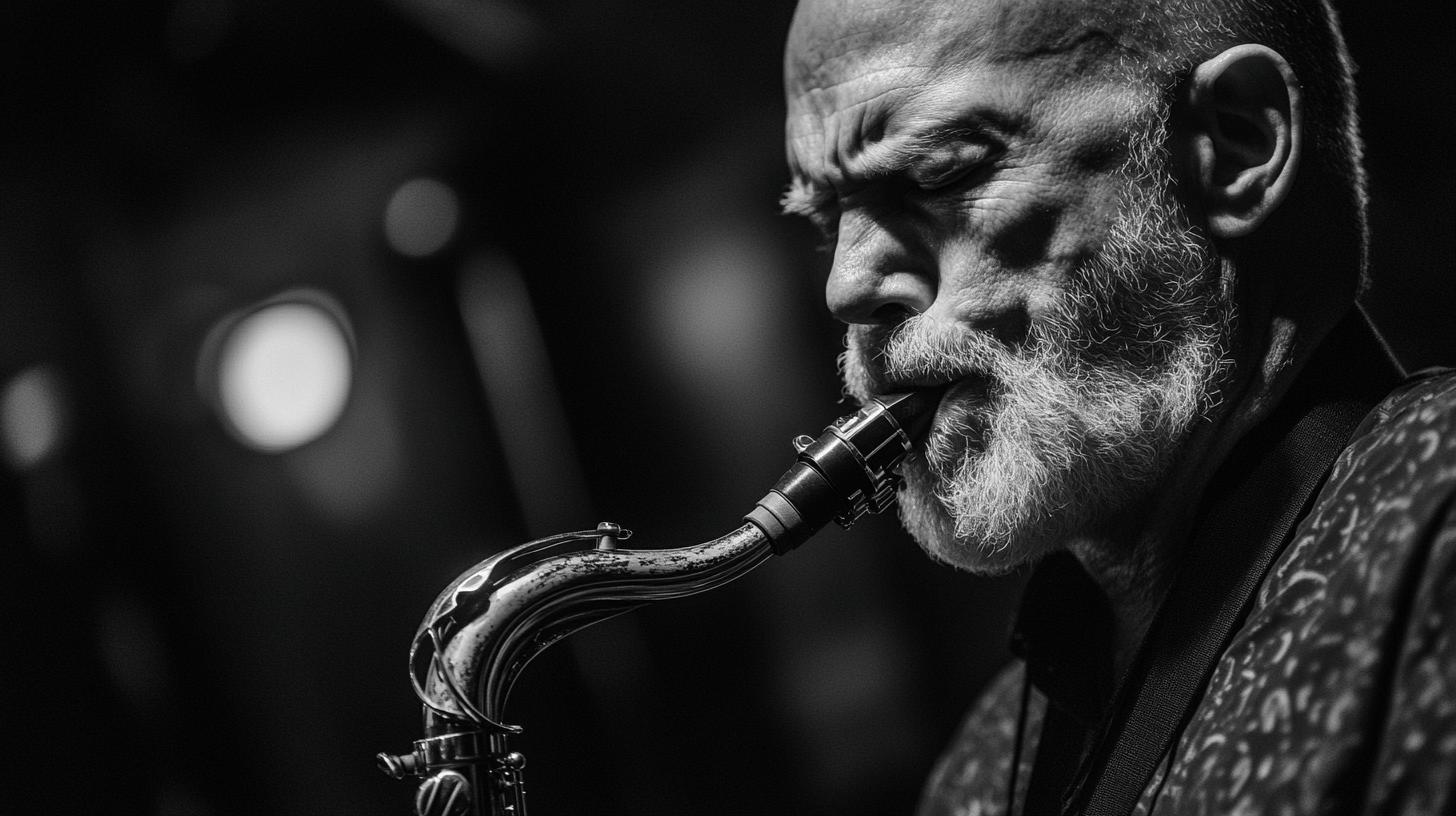
Jazz, renowned for its diverse range of styles, showcases the genre’s adaptability and continuous innovation. From the fast-paced complexity of bebop to the smooth sounds of cool jazz, each style offers a unique listening experience while maintaining the core elements of jazz.
These styles highlight how jazz has evolved over time, embracing new influences and expanding its musical boundaries.
Bebop Jazz
Bebop jazz, emerging in the 1940s, is characterized by its fast tempos and intricate improvisation. What sets bebop apart from other jazz styles? Bebop musicians often employed complex chord progressions and rapid note sequences, challenging both players and listeners with its intellectual depth.
This style was pioneered by virtuosos like Charlie Parker and Dizzy Gillespie, who sought to elevate jazz beyond dance music to an art form focused on musical expertise and expressive freedom.
Swing Jazz
Swing jazz, which dominated the music scene in the 1930s and 1940s, is known for its rhythmic drive and danceable nature. How did swing jazz captivate audiences? Its infectious beats and lively arrangements made swing the soundtrack of the era, with big bands led by Duke Ellington and Benny Goodman drawing massive crowds.
The swing era emphasized a steady, swinging rhythm that provided a platform for energetic performances and elaborate arrangements, making it a staple in ballrooms and dance halls.
Cool Jazz
Cool jazz, emerging in the late 1940s and early 1950s, is noted for its relaxed tempo and lighter tone. What distinguishes cool jazz from bebop? Unlike the frenetic pace of bebop, cool jazz took a more subdued approach, emphasizing subtlety and restraint.
Pioneered by artists like Miles Davis and Chet Baker, cool jazz featured softer dynamics and smoother, more lyrical improvisations. This style appealed to listeners seeking a more introspective and mellow jazz experience.
Jazz Fusion
Jazz fusion, which began gaining popularity in the late 1960s, blends jazz with rock and electronic elements. How did jazz fusion transform traditional jazz? By incorporating electric instruments and rock rhythms, fusion brought a contemporary edge to jazz, attracting a new generation of listeners.
Artists like Herbie Hancock and Weather Report explored this hybrid sound, integrating complex jazz improvisation with the energy and textures of rock music. Jazz fusion exemplifies the genre’s ability to innovate and adapt, merging diverse musical influences into a cohesive and groundbreaking form.
| Jazz Style | Distinct Features |
|---|---|
| Bebop Jazz | Fast tempos, complex improvisation |
| Swing Jazz | Rhythmic drive, danceable nature |
| Cool Jazz | Relaxed tempo, lighter tone |
| Jazz Fusion | Blend with rock and electronic elements |
The Role of Jazz Instruments in Creating Its Sound
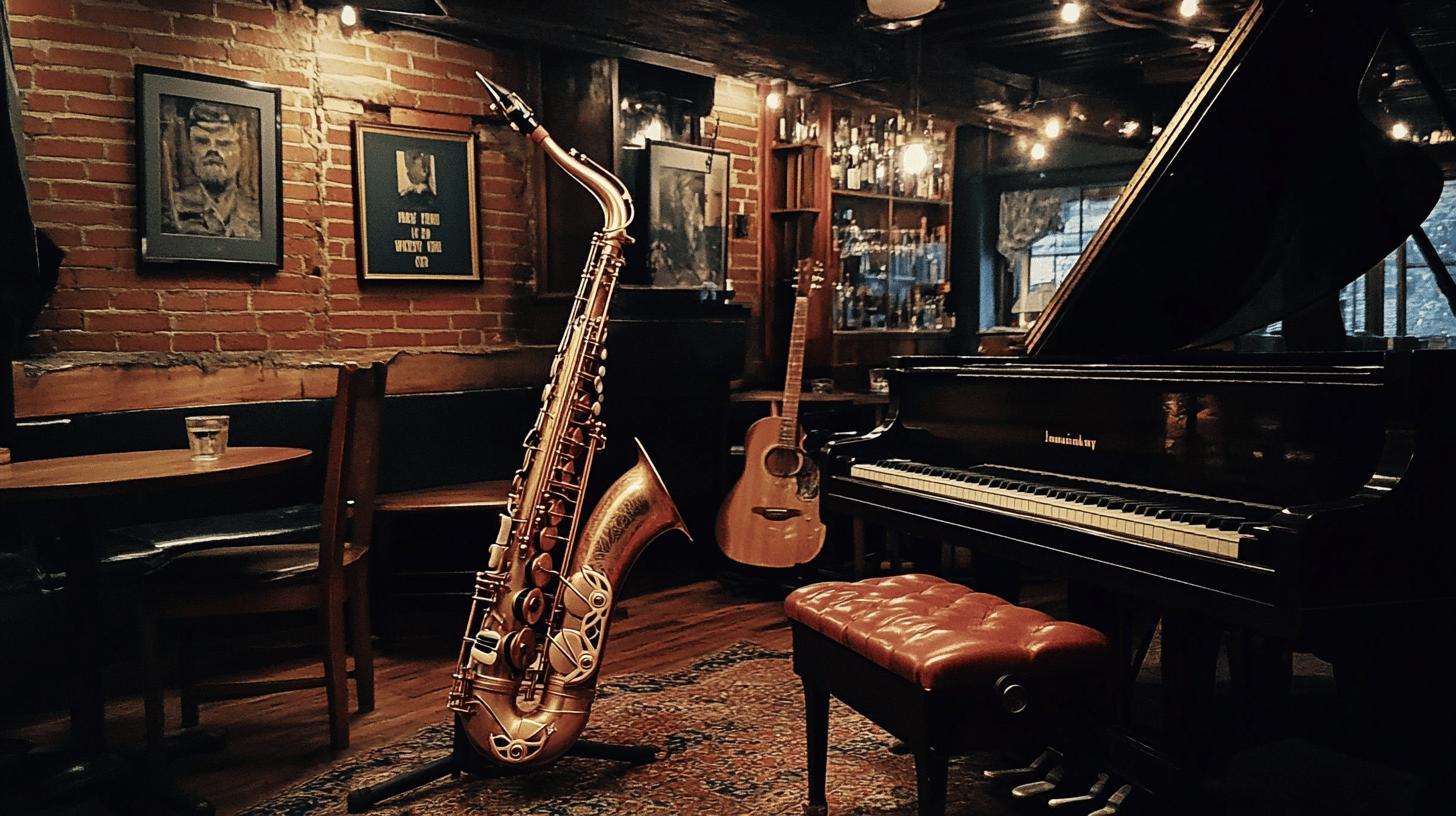
Jazz instruments play a pivotal role in shaping the genre’s distinctive sound. How do instruments contribute to jazz? They provide the foundation for improvisation and melody, allowing musicians to express creativity within the genre’s unique framework.
Instruments like the saxophone, guitar, and piano are central to jazz, each adding its own flavor and versatility. These instruments not only define the timbre and texture of jazz but also facilitate the dynamic, conversational exchanges that are a hallmark of jazz performances.
The diverse range of sounds produced by these instruments contributes to the rich tapestry of jazz, making it both a deeply personal and highly collaborative art form.
-
Saxophone: Known for its expressive range and versatility, the saxophone is a staple of jazz ensembles, capable of conveying both lyrical melodies and complex improvisations.
-
Guitar: The jazz guitar offers both rhythmic accompaniment and melodic solos, utilizing techniques like chordal harmonies and intricate fingerstyle playing to enrich jazz compositions.
-
Piano: The jazz piano serves as a harmonic anchor, providing both structured chord progressions and opportunities for spontaneous improvisation, making it integral to the jazz sound.
These instruments enhance jazz’s improvisational nature by offering musicians an extensive palette of sounds and techniques to explore. How do these instruments facilitate improvisation? The saxophone’s wide range allows players to navigate complex scales and modes, creating innovative solos that push the boundaries of traditional melodies.
The guitar’s adaptability enables musicians to switch seamlessly between rhythm and lead roles, supporting ensemble interplay and individual expression. The piano, with its expansive range and harmonic capabilities, provides a canvas for exploring diverse musical ideas, supporting both solo and group improvisations.
Together, these instruments embody the spirit of jazz, fostering a creative environment where musicians can continuously redefine the genre.
Final Words
Jazz’s rich tapestry of improvisation and innovation has left a lasting impact on music and culture. From its roots in New Orleans to the modern evolution of jazz styles, each era contributed to a diverse, ever-evolving genre.
Influential musicians like Louis Armstrong and Miles Davis pioneered changes and innovation. Understanding what is jazz involves appreciating its musical and cultural elements, enabling a deeper connection to its unique sound and universal influence. Embrace its beauty and ongoing legacy.
FAQ
What is jazz music?
Jazz music is a genre characterized by improvisation, swing, syncopation, and blue notes. Originating in the early 20th century within African American communities, it is known for its distinct polyrhythms and call-and-response patterns.
What is jazz dance?
Jazz dance involves a performance style that includes various types of movement techniques such as isolations, jazz hands, and syncopated rhythms. It complements jazz music with its energy and expressiveness.
What are jazz songs?
Jazz songs typically combine elements like improvisation, unique rhythms, and use of harmony. Stylistically diverse, they encompass everything from traditional jazz standards to modern compositions in various sub-genres.
What are jazz artists?
Jazz artists are musicians who specialize in playing or creating jazz music. Famous jazz artists include Louis Armstrong, Duke Ellington, and Miles Davis, known for their contributions and influence in the genre.
What is jazz music known for?
Jazz music is known for its improvisational nature, complex rhythms, and distinctive harmonies. It is celebrated for its unique ability to blend musical innovation with expressive individuality.
Where did jazz originate?
Jazz originated in the early 20th century within African American communities, primarily in New Orleans. Its roots include influences from blues, ragtime, and European classical music.
When did jazz become popular?
Jazz became widely popular during the 1920s, known as the Jazz Age. The genre continued to evolve, experiencing surges of popularity during different periods, notably with swing music in the 1930s.
What defines jazz music?
The defining elements of jazz music include improvisation, syncopation, blue notes, and swing. It thrives on spontaneous creativity and musical exchange among performers.
How do you explain jazz to someone?
Jazz can be explained as a dynamic musical genre rooted in improvisation, rhythm, and harmony. Its distinctive sound combines emotional expression with technical skill, bridging different musical traditions.
What is jazz, short description?
Jazz is a genre originating from African American communities, integrating elements like improvisation, swing rhythms, and unique harmonies to create its distinct sound and style.
What is the main idea of jazz?
The main idea of jazz is to combine spontaneity with structure, allowing musicians to express individual creativity while adhering to a framework of rhythm, melody, and harmony.

